On Thursday 16th of May 2013, six third year drama students created a durational installation performance titled ‘experiential’.
Experiential caused audience members to think about cause and effect in relation to their mood. It allowed audience members to participate and experience things they may have never had the opportunity to experience before.
The installation consisted of five different stations which would hopefully affect and change the mood of audience members. The Stations were called, Colour explosion, Lose it, Say something nice, Sensory Deprivation and Express yourself.
Audience participation was a huge factor within this piece, for the whole intention of the piece was to see if we could change audience members mood.
COLOUR EXPLOSION
Within this station we had two large canvas’s present. One was an extension from our work in progress showing. We used a large amount of paint balloons and attached them to the canvas through the use of string. We made sure the whole space was well protected in case any of the paint was to explode onto any of the surroundings. We also took the comments from our work in progress session on board and created a popping instrument, which consisted of a pin being attached to a large pole. Lots of people came to experience this station and from the responses of audience members, it was a huge success and most definitely had an impact on changing mood.
Lots of audience members commented on how fun the station was and how it made them feel happy. Many of them were shocked at just how happy such a task had made them feel. We knew this would be a popular station and as predicted we started to run out of paint balloons. Because of this it meant that some audience members could only pop one, when they may have liked to pop several.
The aim of this station was to invite audience members into doing something that is different from their everyday lives. We also wanted to try and emerge the childlike ability of having fun and being messy without the consequence.
Below is an image of the canvas in the space before audience members were invited in.

As the day progressed more and more people visited the station, meaning we had to keep going and attaching more and more balloons. The final result was interesting to look at for none of us knew what the final product would look like. Below are some images of the final product.
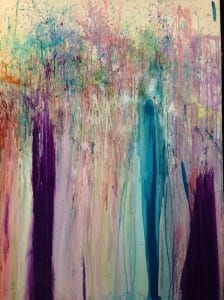

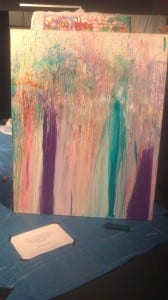
As well as having the paint balloons in the station, we also had a canvas in which we invited audience members to come and paint on. We had an array of different coloured paints, sponges, paint brushes and mixing pallets.
Throughout the day more and more images were created on the canvas.
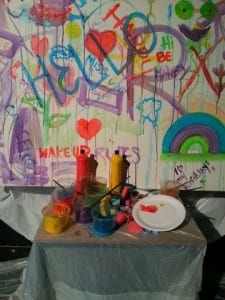
Eventually space was limited so some audience members were creating images over previous ones. The end result was also interesting to look at for it was a collection of everybody that participated, and in a sense was a physical piece of work that was created by the community of the performance.
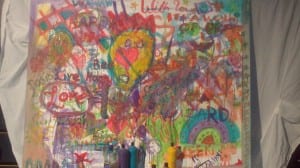
In my opinion i believe the station was very successful for it helped to invite audience members into having fun, which successfully affected their mood.
If we were to use this station again, one factor i would change would be to make the paint in the balloons less watery so that when the paint dried, we would have more vibrant colours presented. If we were to develop this idea and take it further, i would dedicate an installation just to this specific area by having a room with white walls and floor. I would allow audience members to run their creativity throughout the whole room. To add to the element of childlike memory and that ability of having fun. As well as having paint balloons for audience members to pop, i would have a selection of balloons they could use to in fact throw at the wall if they wished, meaning they were more free with expressing what they wanted to do with the materials available to them.
LOSE IT
Within this station we sectioned off a corner of the room and created an X target on the floor. There was a line in which audience members stood behind whilst a variation of crockery was laid out for them.

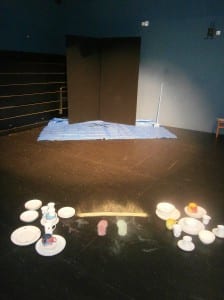
The aim of the station was see if audience members would pick up an item of crockery, throw it at the target for it to smash to pieces, allowing them to ‘lose it’. The reaction from audience member’s in this station was interesting to watch for when people first came into the space, they felt shy and unsure of whether or not they actually wanted to smash something. However, once they had smashed their item they were amazed at how it had instantly changed their mood and made them feel better. Some people got really into this section for it is not seen as acceptable in everyday life. By allowing the audience to smash such delicate items like fine china, meant they were able to release all of their anger or stress out onto that particular item.
A thing we discovered from this station was it effected other members within the space, not just the individual who was taking part. It was interesting to see the different ways in which people decided to smash their item. Some audience members launched their item with great force, where as other members would just gently toss it towards the targeted area.
Unfortunately, even though we protected the area, it wasn’t enough and we had to cut this station short for the smashed items were beginning to damage the stage floor. This was out of our hands, but it would of been nice if we could have carried on with this station for it would have been nice to see how the following audience members related to it.
If we were to further this idea, i would like to invite audience members to bring in their own objects in which they would be able to smash. I think that by having something personal to them would effect their mood even greater in relation to having a random object with no relevance towards them.
SAY SOMETHING NICE
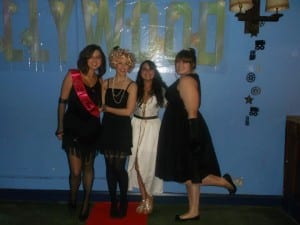
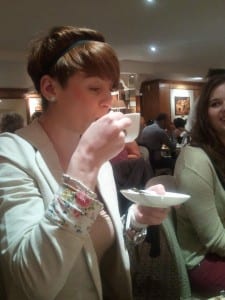
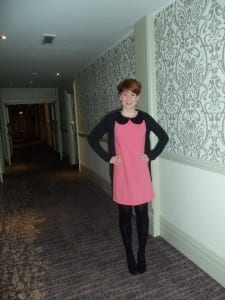
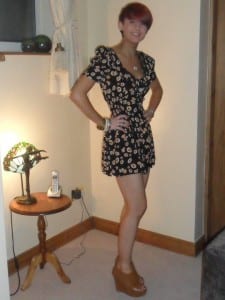

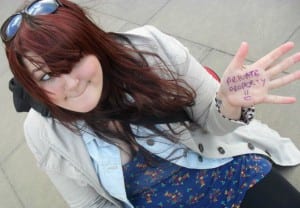



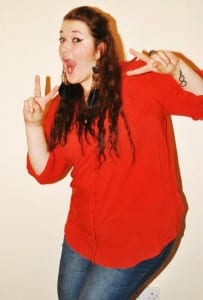

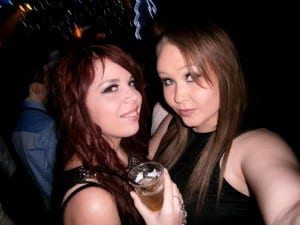
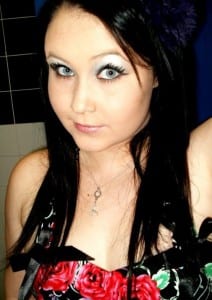
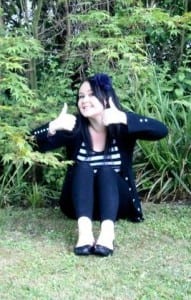

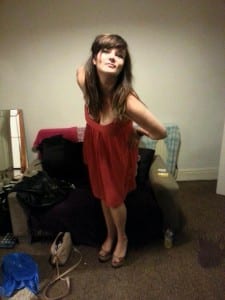
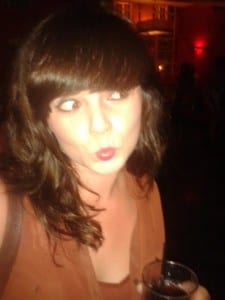
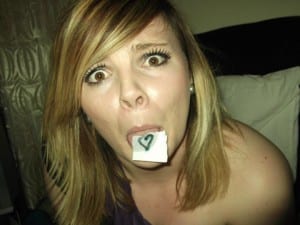
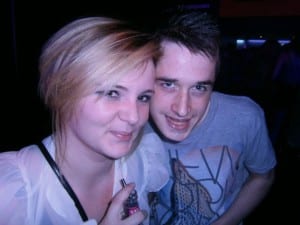






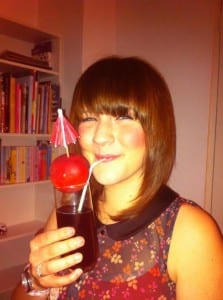
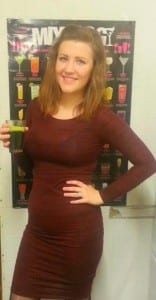
The pictures shown above are a small collection of the images we used within the say something nice section. Each member of the group had roughly 10 images each hung up in the space with fishing wire or attached to wall dividers.
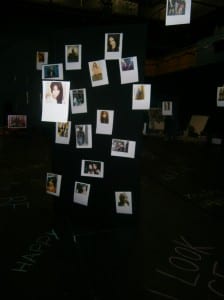
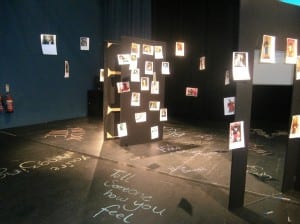

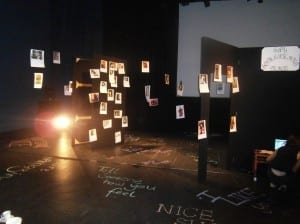
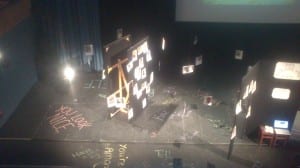
We each took some images of a different member of the group away and wrote something nice about that particular photo. We also left pens within the station so audience members were invited to write something nice on the photos if they wished to.
Some things that were written alongside the pictures were comments like:
- You look fun
- Nice smile
- Lovely Hair
- Gorgeous eyes
- Friends
- Pretty
- Trendy among many others.
As well as having our images suspended in the air and attached to the wall dividers for audience members to write on, we also wrote nice comments / phrases on the floor with coloured chalk.
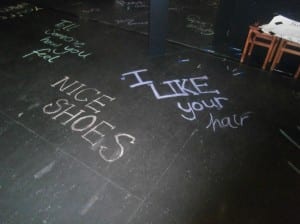
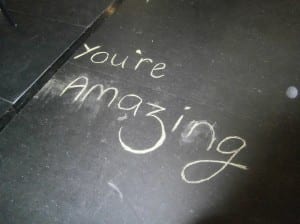
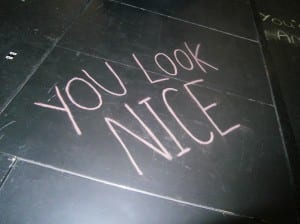

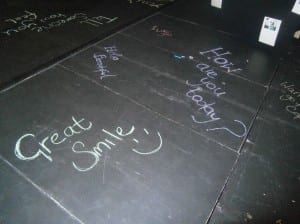
We also left piece of chalk lying around in case audience members felt like they wanted to write something nice on the floor as well. Our intention for the piece wasn’t to make audience members feel like they had to write something nice, but the invitation was there for them if they wanted to. If they did not feel like writing anything nice, we hoped that this station may influence them into saying something nice to somebody outside of the space instead.
SENSORY DEPRIVATION
Within this station we had two chairs stationed at the back of the room where audience members were able to go and sit and place headphones on. It was then up to us if we wanted to go over and blindfold them and tie them to the chair, making it impossible for them to get up and leave.
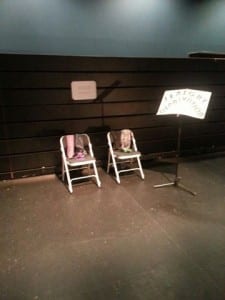
By trying to take away as many of the senses as possible from audience members, we wanted to see just how confident and relaxed they felt when they knew they were no longer in control and whether or not the loss of one or multiple sensors affected their initial mood from before they sat down.
There was no time limit to this station so for different members, we would leave them for varying amounts of time. After their time in the station, the audience responses were very different. Some people commented on how they could have sat there for hours as they felt so relaxed and happy, whilst not having to worry or be aware of what was happening around them. Another audience member stated to me how he didn’t like the experience at all, the fact he was tied up made him feel nervous and on edge and didn’t know what to expect.
These two individual responses go to show how different people react in the same situation and how it can have such a drastic contrast with the way in which their mood are affected.
EXPRESS YOURSELF
Within this station we had a variety of beanbags placed around the floor where audience members were invited to sit, lay down and relax if they wished. They were invited to use this space in which ever way they felt necessary, whether it was to sit and listen to the music that was being played throughout the installation or whether or not they felt the need to dance about. The aim of this section was to see how audience members would respond and whether or not the music that was playing would effect their mood.
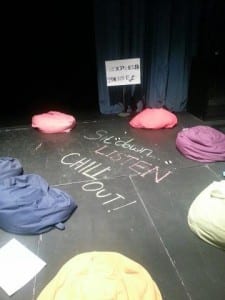

When i went up to the balcony level to see Alex (who was manipulating the music), it was evident that audience members found the station to help them to just sit there and relax. We played some sad music and then played a contrasting happy song ‘walking on sunshine’ to see if this would automatically effect the audience’s mood. To our surprise some audience members within the station stood up straight away and started dancing with each other.
The thing i would change about this section would to possible make it more secluded, so audience members were able to just relax and focus on the station they were in instead of being distracted by everything else that was going off.
PROJECTION
Throughout the installation performance we had a projection that was constantly displayed on the cinema screen. The projection consisted of both good and bad images. An example of the good images were:
- the countryside
- people smiling
- baby animals
- rainbows
- laughter
- friends and family members.
An example of some of the bad images present were:
- Poverty
- war
- people crying
- dead animals
- scary images and others.
We set out some chairs in front of the cinema screen to invite audience members to sit down and watch the projection if they wanted to.

The images were fast paced and on a constant loop for the 4 hour duration. Because the images were so quick it meant that they did’t all register in your head at once, meaning that because it was on a loop, every time you would watch the video you would notice something that you had missed the first time. Some audience members found certain images to be disturbing which made them not want to carry on watching any longer.
The projection in my opinion worked well with the manipulation of music. When i was sat watching the projection and sad music was playing, i felt myself focusing on the bad images, in contrast to when happy music was playing i found myself taking more notice of the happy images instead.
FURTHER DEVELOPMENT
If we were to conduct this installation again, i would like to see the variety of audience responses we would get in relation to the environment. Because we are students and conducted it within the LPAC meant that a lot of the participants were our close friends and other students. I would like to see the responses of audience members if we conducted the installation in the center of town where there is a mixture of people. It would be interesting to see how audience members who we don’t know and are not friends would respond to the different stations. In my opinion I believe that if we conducted this in a new environment, audience members may not respond so positively towards certain station, sensory deprivation in particular. I think this would be due to the fact we would be strangers to them and it may effect their decision in allowing us to take complete control.
Overall i think the 4 hour installation was a huge success. We had a large group of audience members and it was nice to see how people kept coming and going throughout the day, experiencing something different each time.
It was very rewarding to see how audience members were responding to our piece with such positive comments and it was satisfying knowing that we had been able to make somebody have a better day, just by affecting their mood with the simplest of tasks.

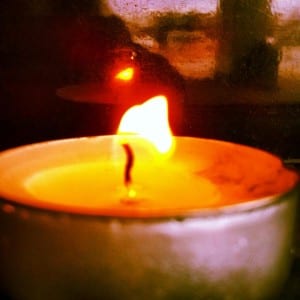

















































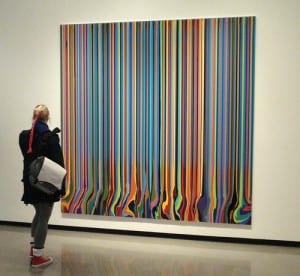
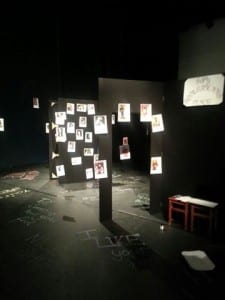 .
.